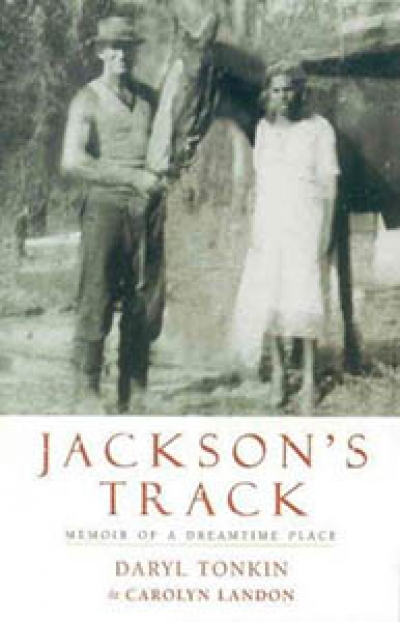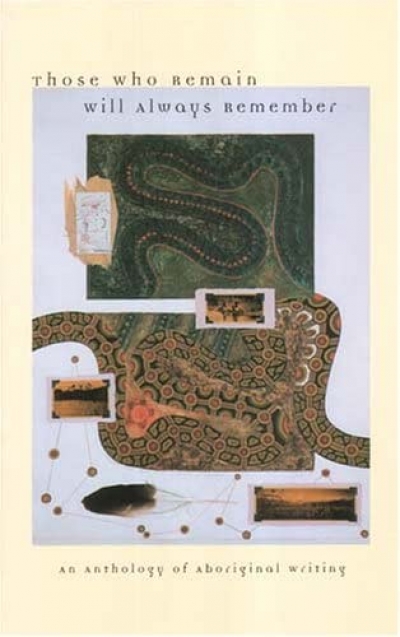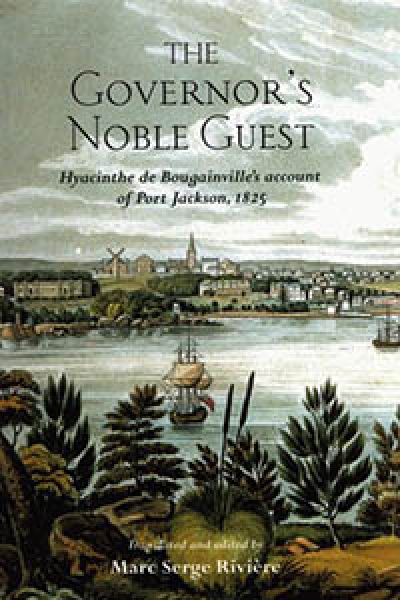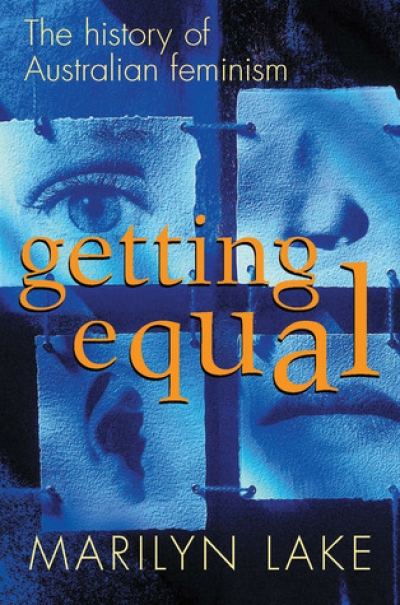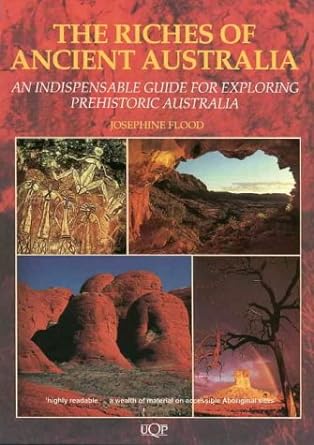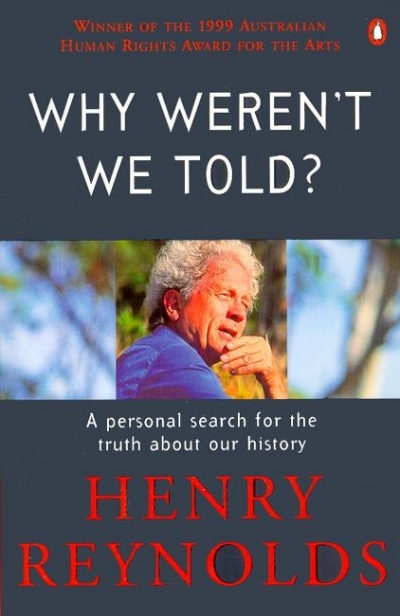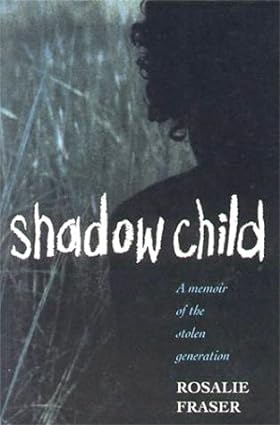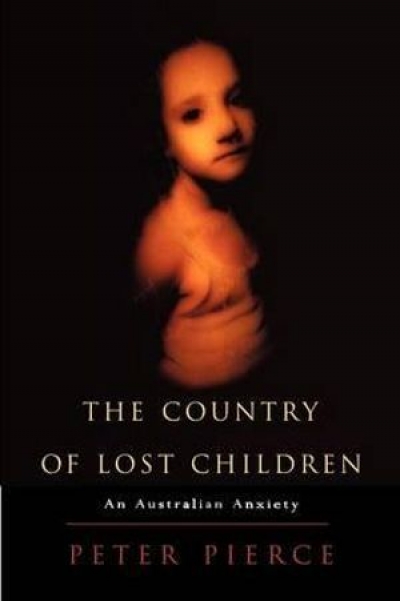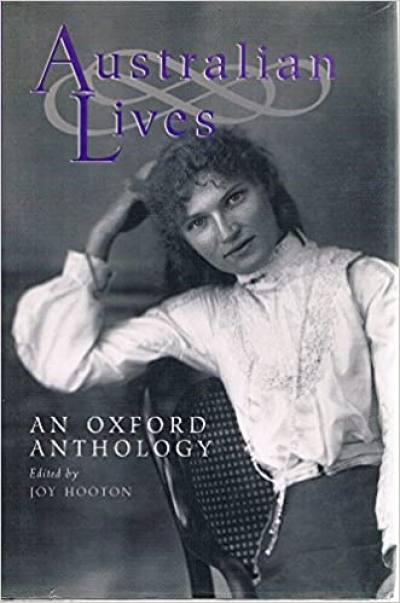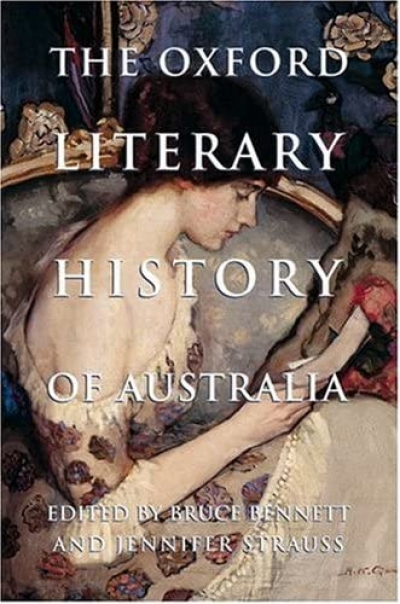Australian History
Jackson's Track: Memoir of a Dreamtime place by Daryl Tonkin and Carolyn Landon
When I first picked up a copy of Jackson’s Track: A memoir of a Dreamtime place (Daryl Tonkin and Carolyn Landon, Viking 1999), I expected to find the life story of an Aboriginal woman. The striking cover photograph the 1940s of Euphemia Mullett in high-heeled shoes and light summer dress, standing beside a white man and his horse in a forest clearing suggested it, as did the reference to the dreamtime in the book’s title. I soon discovered my mistake. Jackson’s Track is instead the memoir of the white man in the photograph, Daryl Tonkin, who owned land and a timber mill at Jackson’s Track, West Gippsland, for over forty years from the mid-1930s. During this time, an Aboriginal community of over 150 people established itself at Jackson’s Track, setting up camp in the forest and working for Tonkin, felling timber for the mill. Euphemia Mullett was with those people attracted to the promise of work at Jackson’s Track, and she would go on to live there for over thirty years as Tonkin’s wife.
... (read more)Those Who Remain Will Always Remember: An anthology of Aboriginal writing edited by Anne Brewster, Angeline O’Neill and Rosemary van den Berg
Those Who Remain Will Always Remember is a fitting successor to Paperbark, the Muecke, Davis, Shoemaker, Mudrooroo anthology of a decade earlier. Though it is a regional publication, restricted to Aboriginal authors from Western Australia, it follows the same catholic principles of inclusion that made Paperbark a book of its time. Its editors Anne Brewster, Angeline O’Neill, and Rosemary van den Berg provide a kaleidoscopic image of Western Australian Aboriginal life in assembling writings which include critical essays, cultural-political statements, prose fiction, life histories, personal testimony, interviews, and poetry. Importantly, these disparate genres leave the reader with a sense of the editors’ unity of vision rather than ad hoc opportunism.
... (read more)The Governor’s Noble Guest: Hyacinthe de Bougainville’s account of Port Jackson, 1825 edited by Marc Serge Rivière
The British exploration of the Pacific Ocean between 1764, when Byron sailed, and 1780, when Cook’s third circumnavigation concluded, and the colonisation of New South Wales from 1788 onwards, effectively set agendas in discovery and settlement which France and Spain had to emulate if they were to continue as Britain’s imperial rivals.
Spain’s effort to match the British agenda was spectacular, but short-lived. The expedition under the command of Alejandro Malaspina that it sent to explore in the Pacific and to report on the state of the Spanish empire (1789–94) was perhaps the best equipped of all the grand eighteenth-century voyages, but its commander fell victim to political intrigue on his return; and oblivion settled over its results. (Only now are its journals, artwork and collections being fully analysed and published.)
... (read more)Getting Equal: The history of Australian feminism by Marilyn Lake
Getting Equal: The History of Australian Feminism sets out to cover the history of feminism in Australia during the period between 1877, when Charlotte Elizabeth McNeilly unsuccessfully petitioned the Sydney court for a divorce from her abusive husband, and now when Helen Osland is currently serving a gaol sentence for the murder of her husband after a married life of brutal abuse.
... (read more)The Riches of Ancient Australia: An indispensable guide for exploring prehistoric Australia by Josephine Flood
Last year I took my twelve-year-old daughter to see Lake Mungo. We talked all morning about ancient lakes and Aboriginal camp sites but looking at the saltbush she could not make the jump. Standing on the lunette, her keen eyes picked out a tiny crenulated piece of bone amongst the drift sand. Less than ten millimetres long it was a fish otolith, part of the bony structure of the inner ear, its shape characteristic of golden perch. Puzzled she looked around at the dry plain and started to ask, ‘How did a fish get way out here?’. Watching her eyes, I saw the flash of understanding: an ancient lake full of water snapped into focus. The tiny otolith was tangible evidence of past environments no book could match. But to grasp the past imaginatively and intellectually you need to visit the sites and learn to read the landscapes. This is part of the reason I like the latest edition of The Riches of Ancient Australia, Josephine Flood’s field guide to prehistoric Australia. It encourages people to get out and look around.
... (read more)Why Weren’t We Told?: A Personal Search For The Truth About Our History by Henry Reynolds
In November 1998, the Governor General, Sir William Deane, found himself in the centre of a storm over the commemoration of Australia’s Aboriginal dead. Launching historian Ken Inglis’s Sacred Places: War Memorials in the Australian Landscape, Sir William remarked that in a country of more than 4,000 memorials there were none, at least of an official kind, to the Aborigines who had been slaughtered in the ‘Black Wars’ of the colonial period.
... (read more)Rosalie Fraser, a two-year-old Aboriginal child, is taken from her family by Child Welfare authorities and fostered with a distant relation of her non-Aboriginal father. She suffers years of abuse at the hands of her foster mother. Occasionally she runs away but her foster mother is always able to charm her into returning. She finally leaves for good when she meets a young man named Stan whom she later marries. In her mid-twenties a gynaecological operation which becomes unexpectedly complicated and painful causes flashbacks of the abuse she endured as a child and she realises she has to confront her past. She writes Shadow Child and in conclusion recommends writing as a therapy for anyone ‘who has problems to come to terms with’.
... (read more)The Country of Lost Children: An Australian anxiety by Peter Pierce
Peter Pierce’s concern in this critical study is with two periods – from the second half of the nineteenth century, when most of the myths of the lost child began to appear, and the second half of this century, when a quite different kind of narrative emerges. The period in between he regards as largely a consolidation of the late nineteenth-century examples. Ranging widely over not only literature but pictorial art and contemporary factual accounts, he shows the striking changes that take place in the forms in which the legend appears.
... (read more)Joy Hooton must know more about Australian autobiography than anyone else. Her critical and bibliographical works are now complemented by this marvellous anthology – humorous, plangent, and surprising. It replaces the more literary Penguin anthology by the Colmers (an important collection, though now somewhat outdated), and more than accounts for the period not dealt with in Gillian Whitlock’s impressive UQP anthology of contemporary Australian autobiography.
... (read more)The Oxford Literary History of Australia edited by Bruce Bennett and Jennifer Strauss
The index to this literary history lists four references – one neutral, three critical – to Leonie Kramer as the editor of the 1981 The Oxford History of Australian Literature and one each to the publication itself, to Adrian Mitchell, who was responsible for the survey of fiction, and to Vivian Smith as the author of the section on poetry – there is no reference to Terry Sturm, who wrote on drama. None of the sixteen critics and scholars who contributed to the new survey engages in any significant manner with the aims and aspirations of that publication, even ‘though it is acknowledged in the Introduction – together with the work of H.M. Green, Cecil Hadgraft, Geoffrey Dutton, G.A. Wilkes, Ken Goodwin, Laurie Hergenhan, Bob Hodge, and Vijay Mishra – as providing ‘frameworks and a background of references’. The implication seems to be not so much that The Oxford History of Australian Literature reflects an unjustifiably conservative view of national literature – a complaint that arose almost as soon as it was published – but that its methods, ideals, and emphases are irrelevant to the literary culture of the late nineties.
... (read more)

